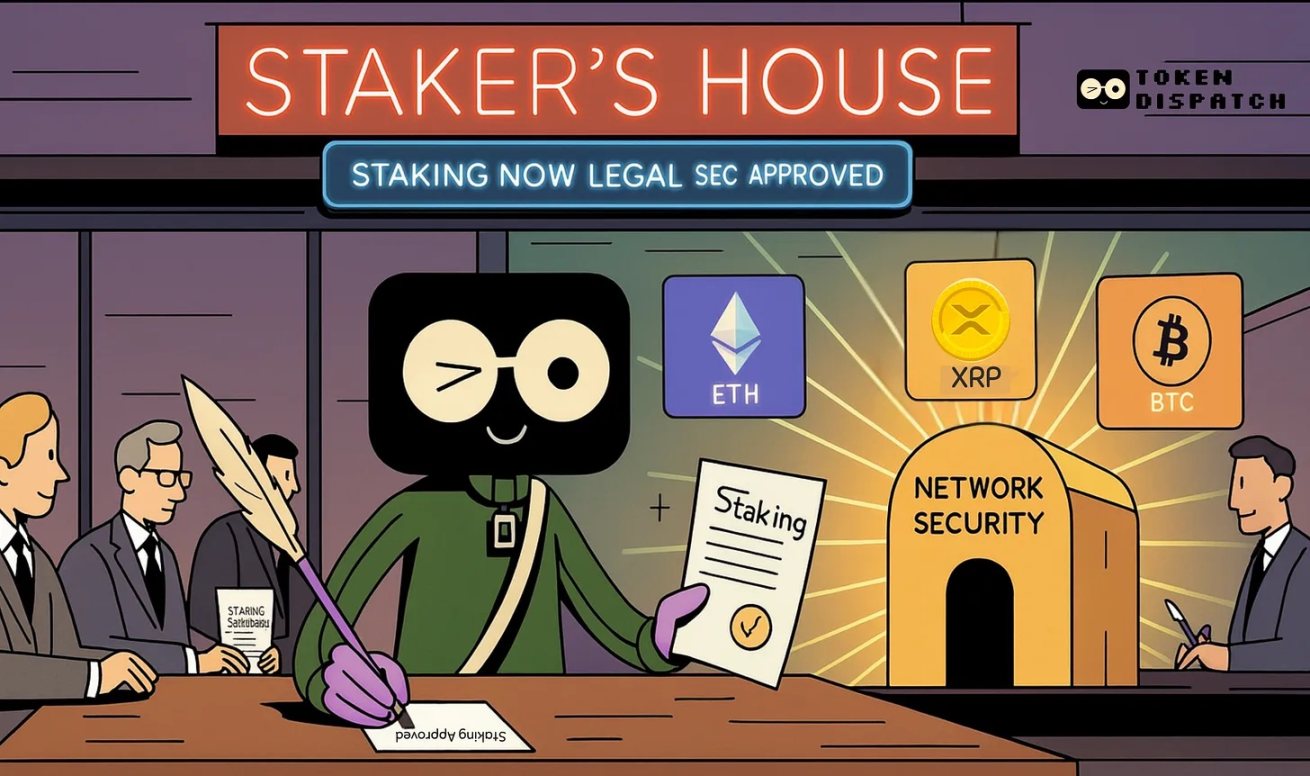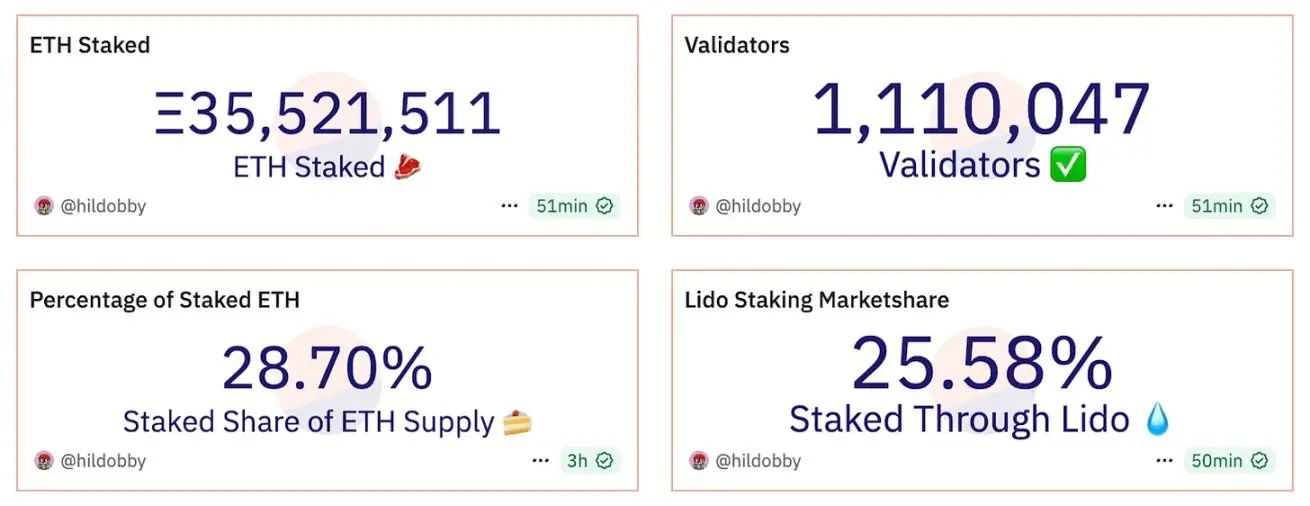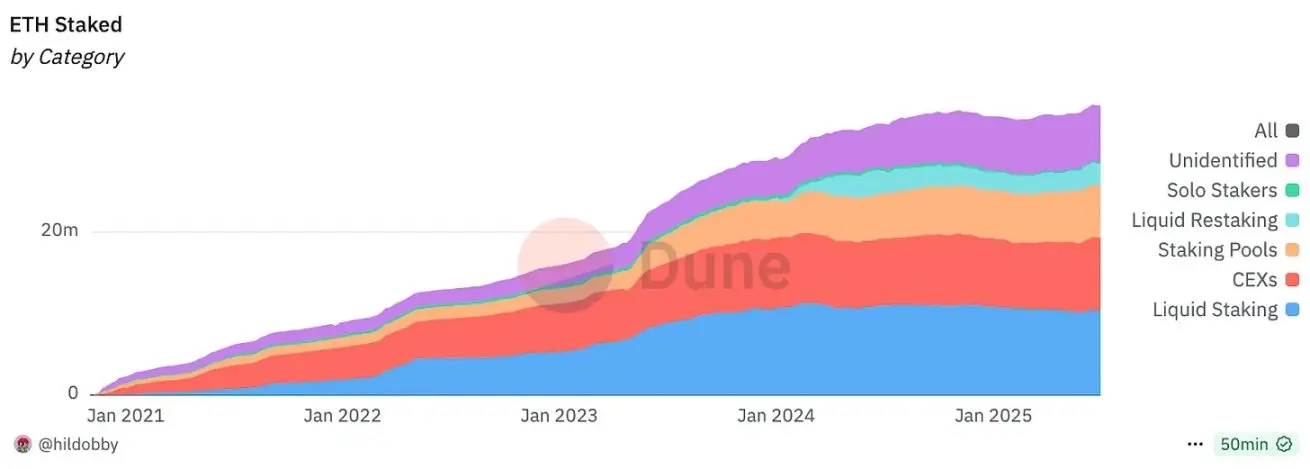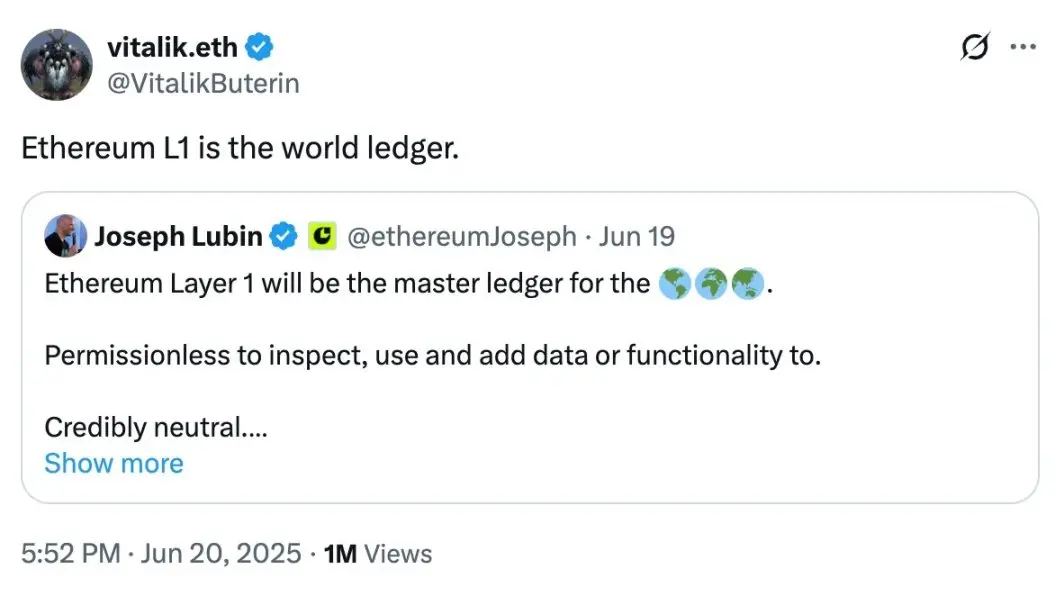In 1688, captains would gather at Edward Lloyd's coffee house in London, seeking individuals willing to insure their voyages. Wealthy merchants would personally sign below the ship's details, becoming "underwriters" who pledged their personal wealth to guarantee these high-risk voyage projects.
The better the underwriters' reputation, the safer the voyage for the captains. The more secure the system, the more business it would attract. The transaction was simple: provide funds, reduce risks for everyone, and then receive a portion of the profits.
After studying the new regulations from the US SEC, one would find that cryptocurrency has essentially digitized the model invented by those coffee house underwriters: people gain rewards by taking risks with their own assets, thereby making the entire system safer and more trustworthy.

Staking is now back on the agenda.
On May 29, 2025, a major change arrived. On this day, the US government clearly stated that staking would not lead to legal troubles. First, we need to recall why this point is so important at this moment.
In the staking mechanism, you lock tokens to increase network security and obtain stable returns.
Validators use their staked tokens to verify transactions, package new blocks, and ensure smooth blockchain operation. As a reward, the network pays them newly minted tokens and transaction fees.
Without stakers, proof-of-stake networks like Ethereum would collapse.
Of course, you can stake your tokens, but no one knew if the US SEC would suddenly show up one day, claiming you were conducting an unregistered securities offering. This regulatory uncertainty caused many institutions to only watch from the sidelines, enviously observing retail stakers earning 3%-8% annual yields.
Large-Scale Staking Tide Approaches
On July 3rd, Rex-Osprey Solana + Staking ETF officially went online, becoming the first US fund to offer direct cryptocurrency exposure with staking rewards. The fund holds SOL tokens through a Cayman Islands subsidiary and stakes at least half of its holdings.
"This is the first staking cryptocurrency ETF in the United States," Rex Shares announced.
They are not the only ones launching such products.
- Robinhood just launched a cryptocurrency staking service for US users, initially supporting Ethereum and Solana;
- Kraken added Bitcoin staking functionality through the Babylon protocol, allowing users to hold Bitcoin on its native chain while earning staking rewards;
- VeChain launched a $15 million "StarGate" staking program;
- Even Bit Digital is selling its entire Bitcoin mining business and focusing on ETH staking.
What exactly has changed?
Double Regulatory Domino Effect
First, the SEC's staking guidelines issued in May 2025.
The guidelines indicate that if you stake your cryptocurrency to help blockchain operation, this behavior is fully compliant and not considered a high-risk investment or security.
This includes solo staking, delegating tokens to others for staking, and staking through trusted exchanges, as long as your staking directly helps network operation. This excludes most staking activities from the "investment contract" category defined by the Howey Test. This means you no longer need to worry about violating investment regulations by staking to earn rewards.
The only thing to be cautious about is promising guaranteed returns, especially when combining staking with lending or launching so-called "DeFi portfolio products" promising fixed returns or engaging in fancy liquidity mining operations.
Second, the CLARITY Act.
This is a proposed bill in the US Congress aimed at clarifying the regulatory jurisdiction of different digital assets. The bill specifically aims to protect node operators, staking participants, and self-hosted wallet users, ensuring they are not treated like Wall Street brokers.
The bill introduces a new digital commodity category called "investment contract assets," establishing specific standards for digital assets to be defined as securities (regulated by SEC) or commodities (regulated by CFTC). The bill also establishes a "maturity" assessment mechanism for blockchain projects or tokens, allowing them to transition from SEC to CFTC regulation, and sets time limits for SEC review to prevent regulatory delays.
So, what does this mean for you?
Thanks to the SEC's regulatory guidelines, you can now more confidently conduct cryptocurrency staking in the United States. If the CLARITY Act passes, all those interested in staking or cryptocurrency investment will welcome a clearer and safer operating environment.
Staking rewards are taxed as ordinary income when you obtain "control" over them; if subsequently sold for a profit, capital gains tax applies. All staking income, regardless of amount, must be reported to the IRS.
Who Will Be the Focus? ETH
However, its price remains around $2,500.

Despite lackluster price performance, ETH's staking data is impressive. The total staked ETH has now exceeded 35 million, hitting a historical high and representing nearly 30% of circulating supply. Although related infrastructure has been under construction for months, its strategic value is now experiencing explosive highlighting under regulatory implementation.


https://dune.com/queries/1941407/3202651
What Major Moves Are Corporate Boards Brewing?
BitMine Immersion Technologies just completed a $250 million financing round specifically for purchasing and staking ETH, with Fundstrat founder Tom Lee serving as chairman. The company believes staking rewards combined with price appreciation will exceed traditional government bond assets.
SharpLink Gaming has taken this strategy to the extreme: its ETH reserves have expanded to 198,167, with 100% fully staked. In just one week in June, its staking rewards reached 102 ETH, epitomizing "locked funds generate wealth".
Meanwhile, ETH ETF issuers are lining up to apply for staking qualifications. Bloomberg analysts predict a 95% probability of staking ETF regulatory approval in the coming months. BlackRock Digital Assets head directly states that the staking mechanism will be a "disruptive turning point" for ETH ETFs, a highly convincing assessment.
If approved, such staking ETFs could reverse the fund outflow situation ETH has faced since inception. When investors can simultaneously obtain price exposure and staking rewards, who would be satisfied with just price fluctuation returns?

https://x.com/VitalikButerin/status/1936036966904308203
When Cryptocurrency Speaks Wall Street's Language
For years, traditional finance has struggled to understand cryptocurrency's value proposition. Digital gold? Perhaps. Programmable currency? Sounds too complex. Decentralized applications? What's wrong with centralized applications?
But "yield" is a word Wall Street absolutely understands. Admittedly, bond yields have recovered from near-zero lows in 2020, with 1-year US Treasury yields returning to around 4%. But imagine a regulated crypto fund that can generate 3-5% annual staking rewards while offering the underlying asset's appreciation potential - this is irresistibly attractive.
The core breakthrough is legality. When pension funds can gain ETH exposure through a compliant ETF that creates rewards by securing the network, this is undoubtedly an industry milestone.
The network effect is now clear: more institutional participation in staking → improved network security → attracting more users and developers → expanded application scale increases transaction fees → further staking rewards increase. This is a virtuous cycle benefiting all participants.
You don't need to understand blockchain technology or believe in decentralization ideology, just understand the simple logic of "holding assets generates profit"; you don't need to endorse Austrian economics or question central bank authority, just comprehend the value of "productive capital assets". Essentially, networks need security protection, and guardians deserve reasonable compensation.






